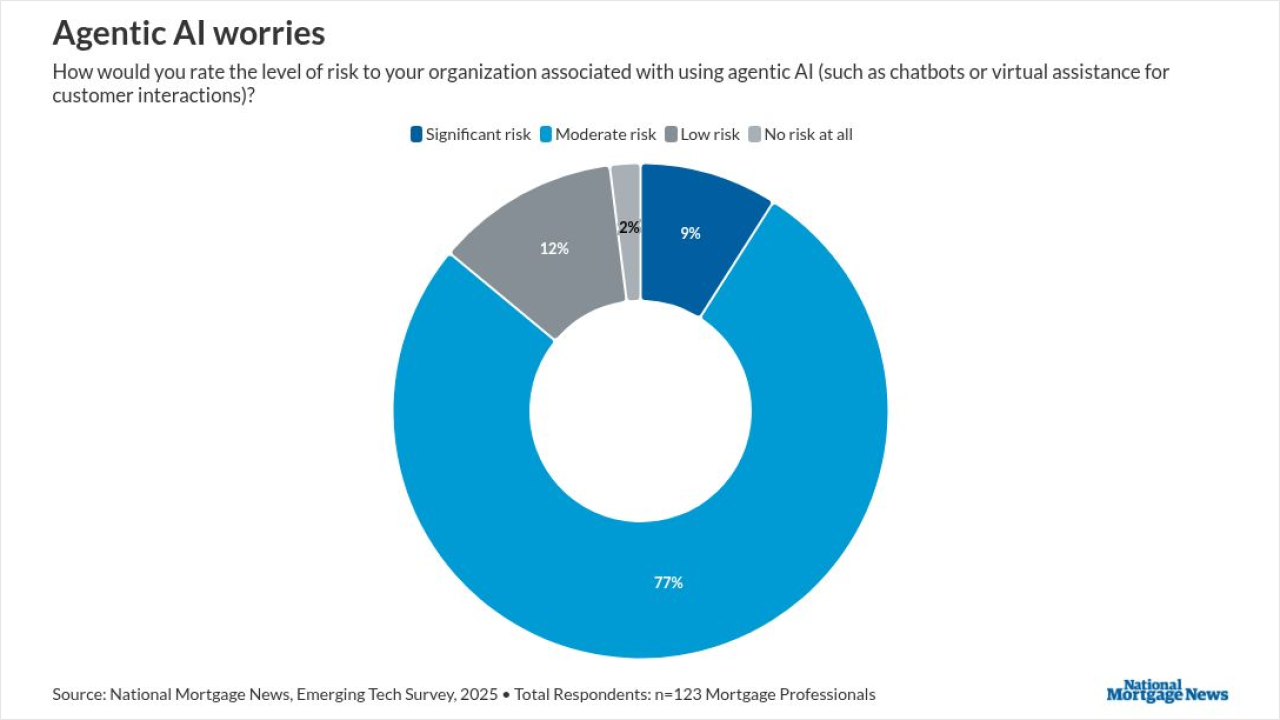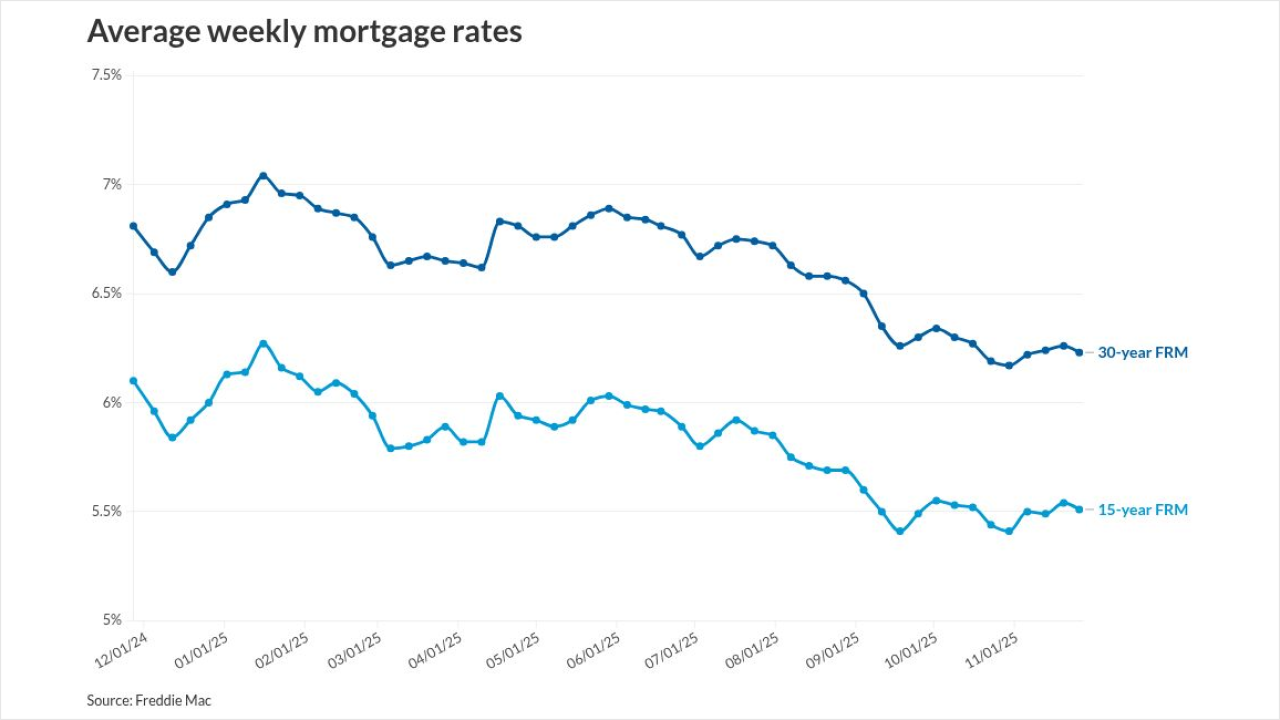Homebuyers in the current Spring season are having to come up with larger monthly principal and interest payments, although a measure of relief might be on the way.
The Mortgage Bankers Association Purchase Application Payment Index rose to $2,186 in April
"Homebuyer affordability conditions declined somewhat in April and remain elevated overall," said Edward Seiler, the MBA's associate vice president, housing economics, and executive director, Research Institute for Housing America, in a press release. "Economic uncertainty and high mortgage rates continue to weigh on prospective buyers' decisions on whether to enter the housing market."
But a report from Redfin which covers the four-week period ended May 25 finds the median monthly mortgage payment rose year-over-year by 3.6% to $2,860, which it says is $25 shy of the all-time high.
The increase was attributed by Redfin to the weekly average mortgage rate as of May 22 reaching 6.86% (according to Freddie Mac), the highest level in three months, along with the median home-sale price rising 1.9% year over year. Freddie Mac's May 29 Primary Mortgage Market Survey, which came out after the Redfin report,
But Redfin said the situation is starting to turn around for buyers, as home prices in 11 of the nation's largest 50 markets are already falling. The nationwide median price should be lower by the end of this year, it expects.
Another reason prices are likely to decline is the continued growth in the number of buyers versus a falloff in the share of sellers.
In a separate data analysis by Redfin, the housing market currently has approximately 1.9 million sellers and 1.5 million buyers, or a 33.7% gap. Since records started being kept in 2013, this is the largest variance. Last year it was 6.5% in favor of sellers; for most of the period between 2020 and October 2023, buyers outnumbered sellers.
Part of this growing gap is sellers are not realizing the housing market has changed from the recent past.
"Many are still holding out hope that their home is the exception and will fetch top dollar," said Redfin Senior Economist Asad Khan, in a press release. "But as sellers see their homes sit longer on the market and notice fewer buyers coming through on tour, more of them will realize that the market has adjusted and reset their expectations accordingly."
Nationwide, an average of 5.5 engaged shoppers have acted by saving or sharing data on properties listed on Zillow. But a wide variation between markets exists for this activity.
A quartet of cities in the Northeast lead the way: Buffalo, New York, has 12.7 engaged shoppers, while Hartford, Connecticut is at 11.3, Providence, Rhode Island at 10.8 and Boston at 10.3.
At the other end, Miami has 2.6 engaged buyers, the lowest share nationwide, followed by Houston at 3.4.
"Inventory is up 20% over last year, and about one in every four sellers are cutting prices," said Zillow Senior Economist Orphe Divounguy in a press release. "Still, there are areas where competition is intense and there are bidding wars for most homes."
In a May 28 comment on mortgage rate movements over the previous week, Kara Ng, senior economist at Zillow Home Loans noted macroeconomic uncertainty is keeping people out of the home purchase market.
"The spring shopping season got off to a slow start in April, despite buyers seeing more options and better affordability nationwide compared to last year," Ng said. The good news, she continued, "Buyers have access to the most housing inventory since August 2020, and mortgage payments are down by 1.3% compared to a year ago."
Meanwhile, pending home sales
"Elevated mortgage rates and economic uncertainty are headwinds for the housing market," Odeta Kushi, deputy chief economist at First American, said in a statement on the NAR data. "However, rising inventory, which puts downward pressure on prices and allows incomes to catch up, serves as a tailwind."
The MBA also sees the market changing in favor of buyers based on the data used for the PAPI calculations.
"Even with the increase in mortgage rates over the month, the median purchase application loan amount decreased slightly to $328,932, indicating that home prices are moderating," Seiler said. "Slower home-price growth, and the overall trend of more inventory, are positives for housing this summer."
Expressed as an index value, the national PAPI decreased 0.6% to 163.0 in April from 164.1 in March. It is also down from 176.8 for April 2024.
Median earnings rose 4.8% year-over-year and payments decreased 3.1%, with the improved affordability driving the PAPI down 8.4% on an annual basis, the MBA said.





